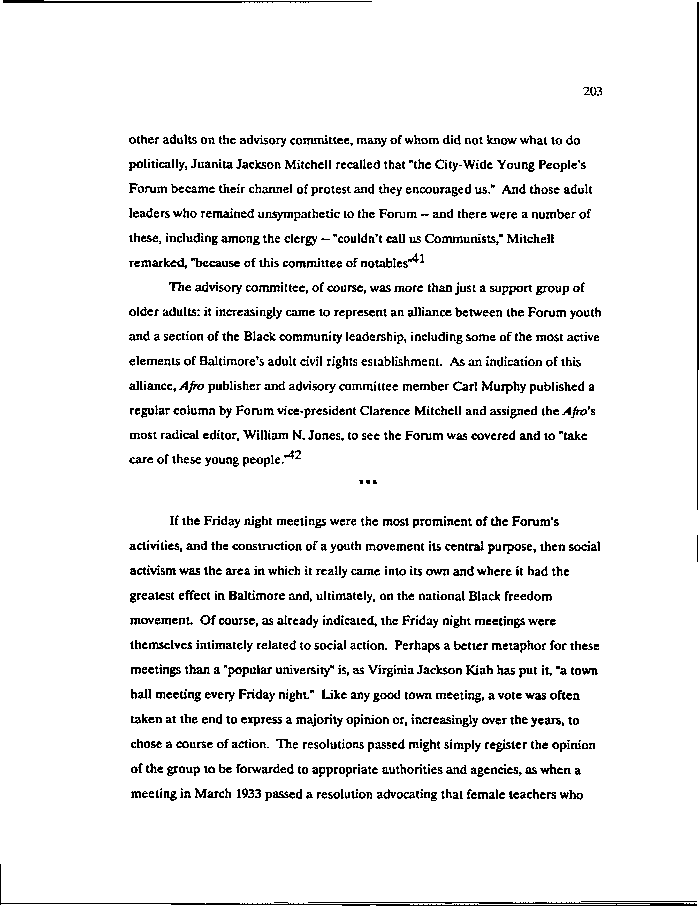|
203
other adults on the advisory committee, many of whom did not know what to do
politically, Juanita Jackson Mitchell recalled that "the City- Wide Young People's
Forum became their channel of protest and they encouraged us." And those adult
leaders who remained unsympathetic to the Forum — and there were a number of
these, including among the clergy - "couldn't call us Communists," Mitchell
remarked, "because of this committee of notables"*1
The advisory committee, of course, was more than just a support group of
older adults: it increasingly came to represent an alliance between the Forum youth
and a section of the Black community leadership, including some of the most active
elements of Baltimore's adult civil rights establishment. As an indication of this
alliance, Afro publisher and advisory committee member Carl Murphy published a
regular column by Forum vice-president Clarence Mitchell and assigned the Afro's
most radical editor, William N. Jones, to see the Forum was covered and to "take
care of these young people. ^
If the Friday night meetings were the most prominent of the Forum's
activities, and the construction of a youth movement its central purpose, then social
activism was the area in which it really came into its own and where it had the
greatest effect in Baltimore and, ultimately, on the national Black freedom
movement. Of course, as already indicated, the Friday night meetings were
themselves intimately related to social action. Perhaps a better metaphor for these
meetings than a "popular university" is, as Virginia Jackson Kiah has put it, "a town
hall meeting every Friday night." Like any good town meeting, a vote was often
taken at the end to express a majority opinion or, increasingly over the years, to
chose a course of action. The resolutions passed might simply register the opinion
of the group to be forwarded to appropriate authorities and agencies, as when a
meeting in March 1933 passed a resolution advocating that female teachers who
|

